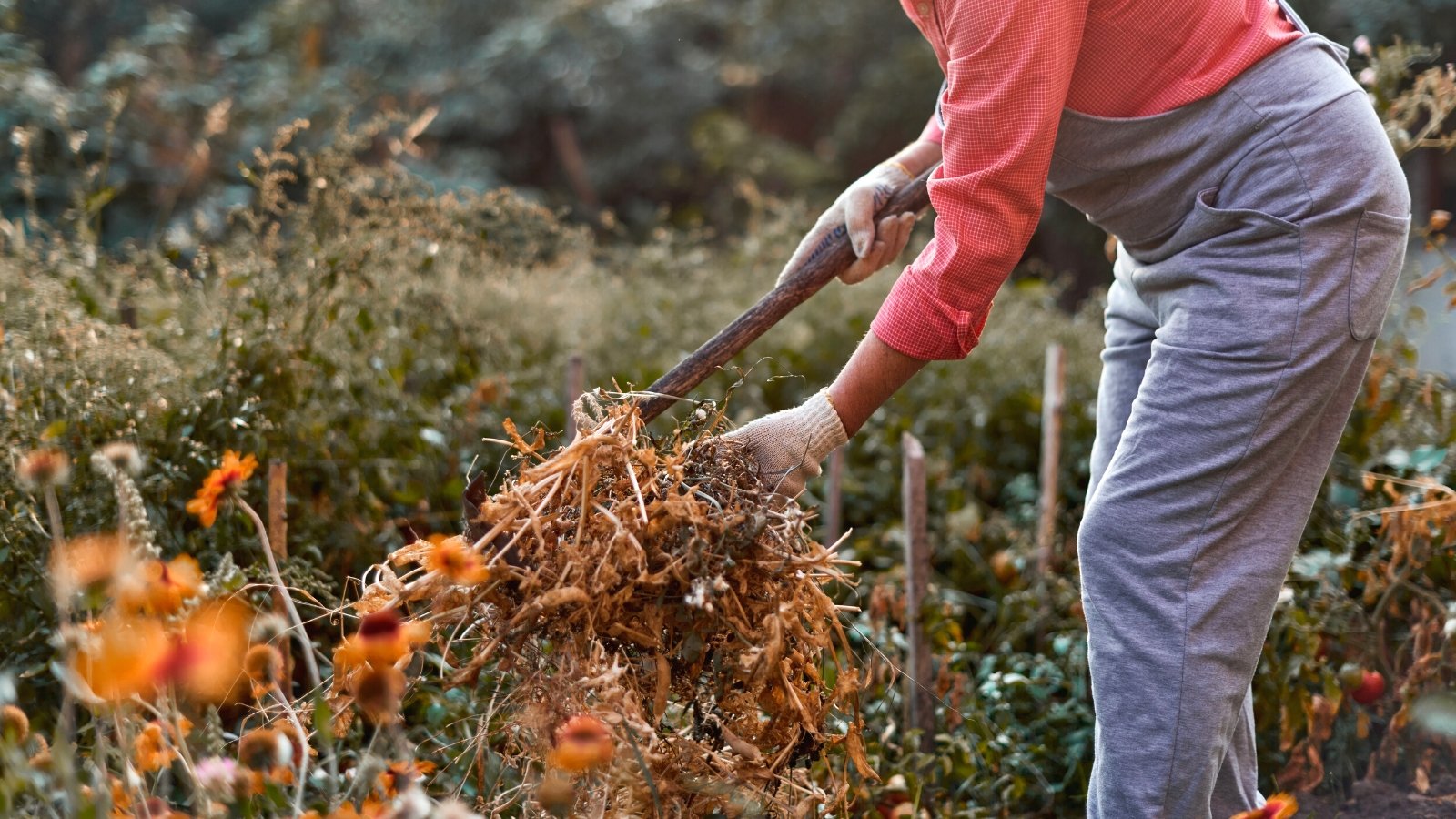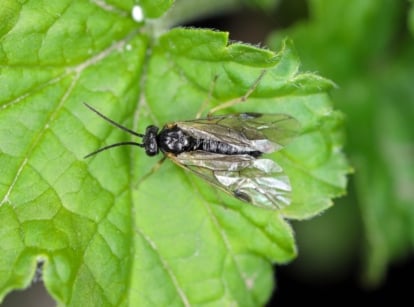How to Identify, Control, and Prevent Fruit Flies
The fruit fly is an incredibly common pest on freshly-picked produce. Find out about them and good methods of prevention from expert Huan Song.

Contents
While going on vacation is one of the best parts of summer, it also means not tending to our gardens for days or weeks at a time. I recently went away on a week-long trip during which there were several thunderstorms. When I came back, I saw many of my tomatoes had split from the rain. Along with the rain came a fruit fly infestation, like a veritable storm.
Fruit flies are a common late summer pest both outdoors as well as indoors. Fruit flies are attracted to the smell of ripe and fermenting fruits and vegetables. In this blog, we’ll cover some ways to deal with them in the garden and home.
What are Fruit Flies?
The common fruit fly, Drosophila melanogaster, is also known as the vinegar fly because of its attraction to the pungent smell of ripe fruits and vegetables. Drosophila melanogaster is just one of many species in the Drosophila genus.
Fruit flies are drawn to specific aromatic compounds that send signals to their antennae. They are believed to have originated from sub-Saharan Africa.
Adults can range between 0.1 and 0.2 inches long with yellow or brown bodies and distinctive red eyes. The adults have two antennae, each with three segments ending in tiny hairs. They undergo sexual reproduction and each female can lay up to 100 eggs per day and 500 eggs in her lifetime.
Life Cycle

Fruit flies have short life cycles spanning eight to ten days from egg to adulthood depending on the temperature. They are particularly active in the summer and virtually disappear when the weather gets cold. Their rapid reproduction rate makes fruit flies the perfect species to use in science labs for various genetic experiments. Interestingly, they have been the main contributor in at least nine Nobel-prize-winning studies!
Fruit flies undergo a complete metamorphosis. Each fruit fly starts as an egg, which then hatches into a larvae with three instar stages. The larvae grow and molt during each instar, then become a pupa, and finally emerge as an adult fruit fly. Adults become sexually active quickly after emerging from their pupae and can start mating within 24 hours.
These pests lay their eggs in moist locations, often in or on fermenting fruit. Both fruits and vegetables can be habitats, particularly as they’re decomposing. It’s not uncommon to find fruit flies near fermenting produce in a compost pile. With such a short life cycle, multiple generations can appear in a single season.
Common Habitats

Have you ever heard of the saying, “time flies like an arrow and fruit flies like a banana?” It turns out that although fruit flies are attracted to bananas, they have a stronger preference for citrus, especially when it’s time to lay their eggs.
The fruit fly that we all know today is a generalist and can be found in many common foods. They are also frequently found on unpicked ripe fruits outdoors along with other insects like the citrus fruit fly.
Scientists who sought out the origins traced it back to a southern African fruit called the marula (Sclerocarya birrea). Loved by humans and animals, they were stored in their cave dwellings. Marula is a very sugary fruit with a highly fermentable pulp and a staple in the diet of many tribes.
What do Fruit Flies Eat?

Fruit flies are not picky eaters and will feed on just about anything. Despite their name, they are flexible to consume various foods. These include onions, potatoes, and even dew secreted by aphids to name a few. The fruit fly larvae feed on the yeast produced by decaying plant material.
Control

Fruit flies are very hard to control because they reproduce very quickly and are pervasive. They are one of the most common food contaminants for growers, grocers, and restaurants.
Even if you don’t have fruit flies, you may bring in a piece of fruit that contains eggs or larvae. These will often hatch and reproduce in your home. However, some sanitation best practices can help keep down their population and get rid of fruit flies where possible.
Organic or Chemical Control

Use an organic spray, like horticultural oil, to either kill adult flies or prevent eggs from hatching. Organic sprays are not as effective against adults because the liquid needs to come in contact with the flies in order to work. Apply sprays regularly to mitigate against the rapid generations of these flies.
Chemical sprays are more typically used in orchards and commercial operations. Farm managers use a combination of techniques. They often use sticky traps or sex pheromone traps to monitor the population of adults. These methods are employed in addition to general sanitation practices.
Environmental Control

Traps are a common way of environmental control. They are commercially available or can be easily made with household materials.
Fill a jar with a few inches of apple cider vinegar, beer, or wine, and add in a few drops of dishwashing liquid. The flies will be attracted to the scent of the fermenting liquid. The soap will break the surface tension of the apple cider vinegar and fruit flies will fall in and drown.
Place the trap near susceptible fruits and dispose of the solution with the flies every few days. Alternatively, add a piece of fruit to the bottom of a mason jar and create a paper funnel that sits on top of the jar. Fruit flies will be able to fly in but not be able to fly out of the fruit fly trap. You can also combine these two methods to increase the efficiency of your trapping technique!
Prevention

One of the most important elements of control is to eliminate their breeding sites. Indoors, take out the trash, mop up sugary spills, throw out rotting fruits and onions, and frequently clean out your drains and garbage disposals. Don’t forget about beer cans, wine bottles, and cider bottles and cans!
Refrigerate produce if possible because these bugs cannot develop under cold temperatures. If you make your own fermented foods and condiments, follow the sanitary best practices and tightly seal jars.
Outdoors, it’s important to keep the garden or orchard tidy. Pick up and pick off any fruits that are rotting or have visible infestations. For produce like tomatoes, harvest them before they are fully ripe so they don’t split and spoil on the vine.
Put a tarp over compost or a cover on your compost bin. This can reduce the access to overripe produce near the surface of the pile. It can also help to heat up the compost. High heat can kill the larvae and eggs as well as any adults trapped in the heat.
Frequently Asked Questions
What is the fastest way to get rid of fruit flies?
Get rid of their food source and breeding ground. This means keeping indoor and outdoor surfaces free from rotting or overripe produce. If they can’t breed, they can’t produce the next generation of pest insects.
Keep garbage disposals and drains clean and free from debris from vegetables or fruit. Store food promptly to prevent adults from laying eggs on its surface. Keep trash receptacles closed to prevent infestation.
What attracts fruit flies to humans?
Fruit flies are food generalists that are attracted to many foods that humans grow and consume. Scientists believe that the fly-human relationship developed around 10,000 years ago when humans started eating and storing a southern African fruit called the marula and that fruit flies were originally food specialists who fed exclusively on marula fruits.








